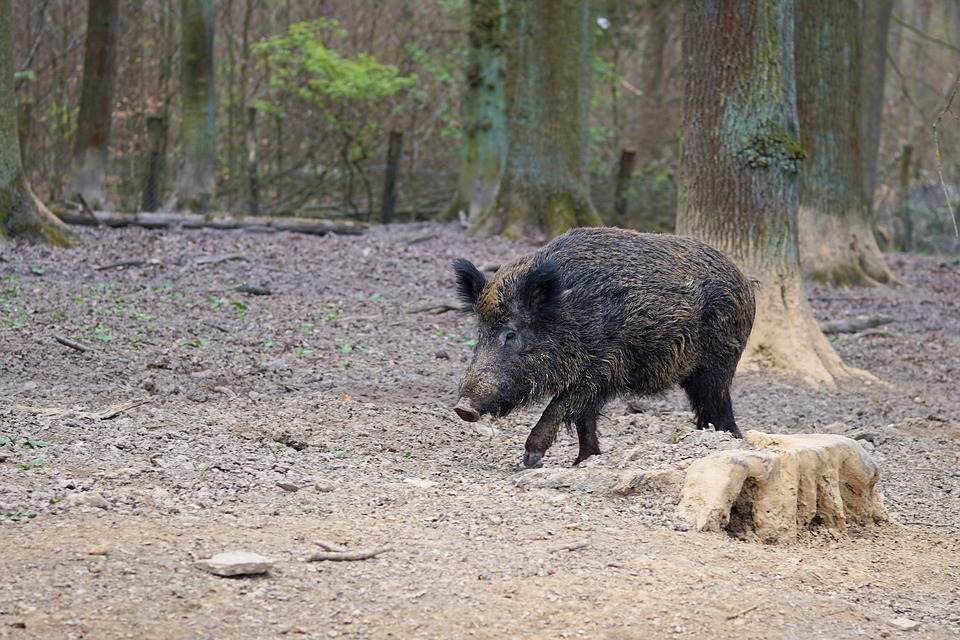
In a few California locales, wild boars can be hunted for sport during specific seasons. In mid-Kern County, the presence of wild pigs is causing growers substantial distress – and there’s nothing sporty about it.
The porcine perpetrators causing agricultural damage and distress seem to be concentrated on land that is part of the vast, 270,00-acre Tejon Ranch, accessible from California’s Grapevine if you know someone who can unlock gates across mostly untraveled roads, and guide you in and out.
Some of the Tejon Ranch land is leased to growers of two popular annual crops – grapes and pistachios. Even though the plots are mostly fenced to discourage pig penetration, the aroma and color of ripening crops attract the untamed tuskers, primarily at night. Their visits are characterized by rampant disorder and destruction of plots they visit and the lack of organization or preference for food supplies.
The pig presence has become persistent enough that it convinced researchers at the University of California to undertake a study, using nighttime cameras to chart the destruction, disorder and mayhem, and suggest means to reduce future damage. The research team included experts from the University of Wyoming, Arizona State University, the U.S. Department of Agriculture and the University of California, Berkeley. Their report appeared in the April-June issue of California Agriculture, the quarterly journal of agricultural research published by the University of California Division of Agriculture and Natural Resources.
The pig invasions take on added importance with the recent increased intensity of regulations and inspections by the U.S. Food and Drug Administration (FDA) to ensure the purity, cleanliness and condition of fresh natural foods reaching consumers. Items contaminated by pig slobbers are doomed from the start.
Although the research project centered on central Kern County, the team learned that in 1996 wild pigs caused an estimated damage of $1.7 million in 40 of California’s 58 counties, and are known to be present in 56 counties. They can and probably do carry diseases that can infect crops and livestock.
In addition to their rooting, wallowing and trampling, which can break tree branches and damage irrigation systems and fences, the marauders can find newborn lambs and calves and threaten poultry that might be unprotected at night. Cat and dog owners in vulnerable locations might be well advised to give their pets some special protection.
The research team set up cameras at numerous locations around the perimeter fences at the two locations studied. In one case, a male pig was outfitted with an electronic collar which revealed that he spent an average of two to three hours foraging the site each night. On one occasion, probably when the crop was at the peak of ripeness, the pig enjoyed seven uninterrupted hours of feasting.
Darkness beckoned the thieving animals. One chart by the researchers shows heavy visitations beginning at about 7 p.m., and increasing through the night until about 3 a.m. They peaked at about 1 a.m., but continued at a diminishing level until 6 a.m.
One of the few pigs outfitted with a collar visited the fenced farm area 116 times between Aug. 2 and Nov. 28, spending a total of 236 hours at the site. He enjoyed seven hours there on one occasion. And he travelled three to five miles in each direction to enjoy his gustatory delights.
When considering control methods, the researchers note that the California Department of Fish and Wildlife issues 50,000 pig tags (permission to hunt) each year, but only for hunting during daylight hours. Only three percent of the wild pig encounters in the UC study were recorded during legal hunting hours
Cameras can reveal only so much. If greater wild pig control is to be gained, somebody is going to have to burn more midnight oil. Bacon grease doesn’t count.









